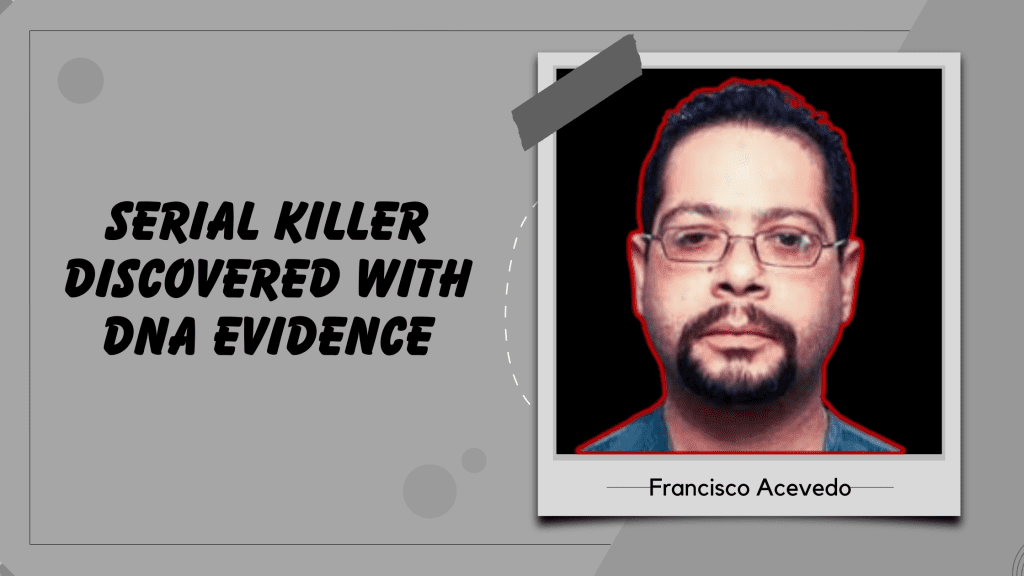This is the story of a man who managed to elude suspicion for more than a decade. A serial killer, living a seemingly normal life, was hiding in plain sight with a family of his own. With children and a partner, he appeared like anyone else. However, when the truth finally came to light, it revealed that this seemingly ordinary man had been responsible for the brutal deaths of three women. This chilling story began in 1989 when the first victim was discovered.
The First Victim: Maria Ramos
The first of these tragic murders occurred in February 1989. Maria Ramos, who had slipped into prostitution early in her life, was often seen on the corner of Jerome Avenue and 183rd Street in the Bronx, an area known for drugs and prostitution.
On February 5, 1989, eleven days after her daughter’s third birthday, Ramos’ body was found sprawled on a sidewalk near a sewage plant in Yonkers. Her naked, lifeless body was left in a horrifying state. She had been stabbed, strangled, and raped.
At the crime scene, her body had been meticulously positioned to face the sky. Her hands were tied behind her back with her own pantyhose, and her front teeth had been knocked out. Near her body, investigators found an empty Budweiser bottle and Newport cigarette butts scattered in the snow. Her jewelry remained untouched, and her clothes were found bunched up nearby, which led investigators to believe that robbery was not a motive.
An autopsy later revealed that her cause of death was strangulation. A vaginal swab containing the killer’s semen was taken, and a DNA slide was sent for analysis. Unfortunately, no match was found in the national database at the time.
The Second Victim: Towanda Hodges
Two years later, on March 28, 1991, another grim discovery was made. Towanda Hodges, 28, was found lying naked on a pile of gravel in the backyard of a fuel oil storage terminal in Yonkers, only 820 feet from where Ramos had been found. The sunny spring day offered a stark contrast to the horror of what had been uncovered.
Hodges, who also had been working as a prostitute in the Bronx, was brutally beaten, raped, and strangled. As with the first victim, her hands had been tied behind her back with her own pantyhose, and her clothes were discarded nearby. Once again, an empty Budweiser bottle and Newport cigarette butts were found close to the body.
Hodges, a mother of three, was known for her sweet smile. Sadly, her elderly grandmother, upon seeing her body in the casket, collapsed and died shortly after. As with Ramos, DNA was collected, but at the time, investigators did not connect the two murders. Consequently, the case stalled and remained unsolved.
The Final Murder: Kimberly Moore
It was not until May 24, 1996, that the final victim of this killer was discovered. Kimberly Moore, 30, a talented woman who had fallen on hard times, was found dead in the Tradewinds Motor Court Motel in Yonkers, a known hotspot for drug addicts and prostitutes. Unlike the other two victims, Moore had never been arrested and had once been a star student and athlete.
Moore’s body was found under circumstances strikingly similar to the previous murders. She had been strangled, raped, and left naked. Her hands were tied, this time with a telephone cord. Despite the brutal nature of the crime, her earrings and watch remained on her body.
Once again, investigators found an empty Budweiser bottle, Newport cigarette butts, and drug paraphernalia in the room. It was at this point that a Yonkers homicide detective, who had been present at all three crime scenes, realized the disturbing connection between the cases.
Subsequently, DNA samples from all three victims were cross-checked. The results confirmed what detectives had begun to suspect: all three murders had been committed by the same person. Although the DNA had been matched across the cases, the killer’s identity remained a mystery.
The Breakthrough: Francisco Acevedo
The case might have remained unsolved for even longer had it not been for a breakthrough in 2009. Francisco Acevedo, a 41-year-old man who had been arrested for his third felony DWI conviction, submitted a buccal swab as part of an early release program. Unknown to him, his DNA matched the samples taken from the bodies of Ramos, Hodges, and Moore.
This match was immediately cross-referenced, and detectives realized they had finally found their killer. The odds that the DNA did not belong to Acevedo were one in six billion. Detective John Geiss, who had spent over a decade working tirelessly on the case, now had his suspect.
The Arrest and Investigation
Acevedo was arrested soon after, though he initially denied any involvement in the murders. During the interview, he remained calm and claimed to know nothing about the crimes. However, when detectives revealed that his DNA had been found on all three victims, he requested a lawyer.
Over the next few years, Geiss worked to build a stronger case against Acevedo. One piece of evidence came from a woman in Florida, who recalled being brutally raped and beaten by Acevedo in the mid-1980s. She believed that she might have been murdered if he had not collapsed drunk on top of her. With this new information, detectives were able to confirm more of Acevedo’s violent past.
The Trial and Verdict
The trial finally began on October 26, 2011, nearly 23 months after Acevedo had been identified as the suspect. The evidence against him was substantial. His DNA had been found on all three victims, and an eyewitness had placed him at the scene of Kimberly Moore’s murder. Moreover, Acevedo had previously worked at the loading dock of the sewage treatment plant where Maria Ramos’ body was found, and his history of violent crimes against women further incriminated him.
After two and a half days of deliberation, the jury returned its verdict. Acevedo was found guilty on all three counts of first-degree murder. He was sentenced to 75 years to life in prison, ensuring he would never be released.
Read More: The Black Dahlia: The Gruesome Murder of Elizabeth Short
Conclusion
Although Francisco Acevedo had managed to avoid detection for over two decades, justice had finally caught up with him. He had lived an unassuming life, blending into society while harboring the dark secret of his brutal crimes. However, thanks to advancements in DNA technology and the relentless efforts of Detective Geiss, Acevedo was brought to justice.
The serial killer who had lived among his victims without suspicion would now spend the rest of his life behind bars, ensuring he could never harm anyone again.





Pingback: The Shocking Crimes of Quincy Allen: How a Prisoner Became a Serial Killer